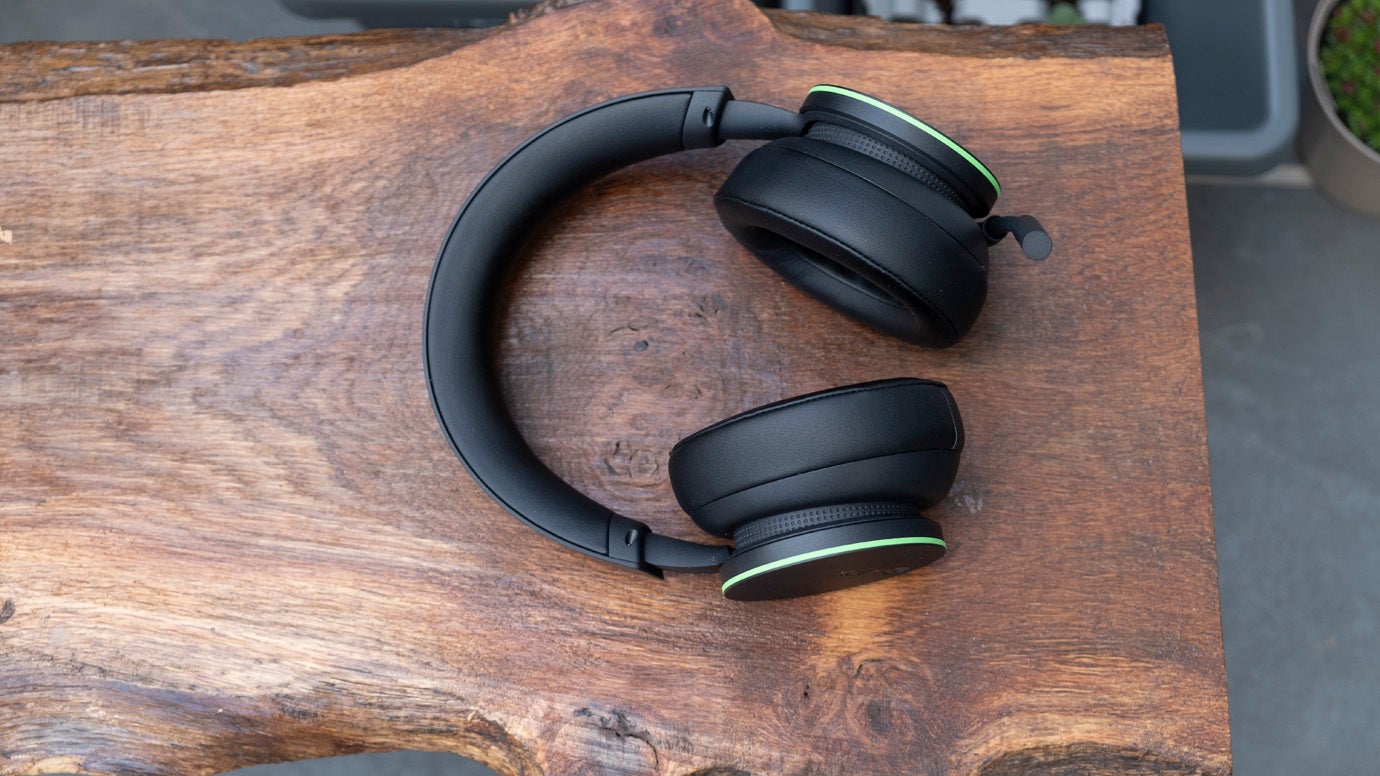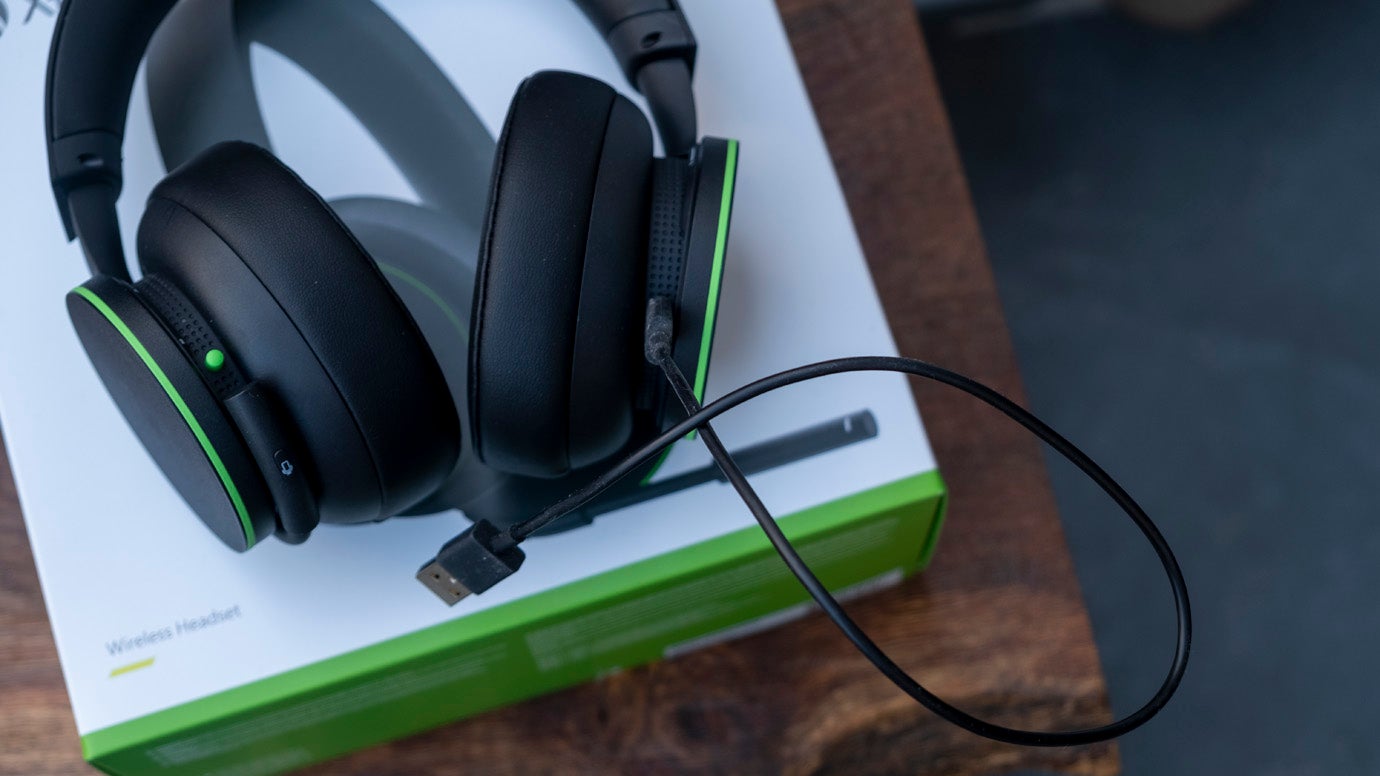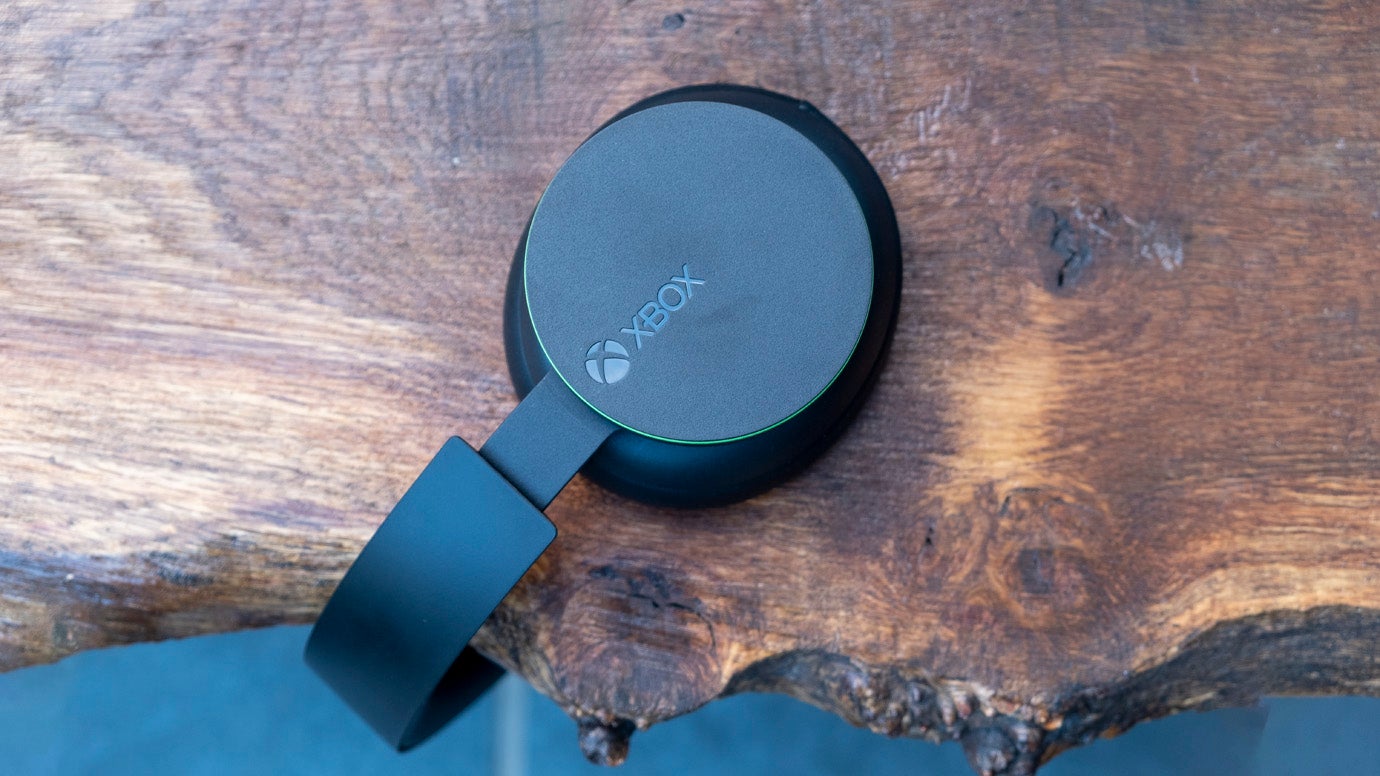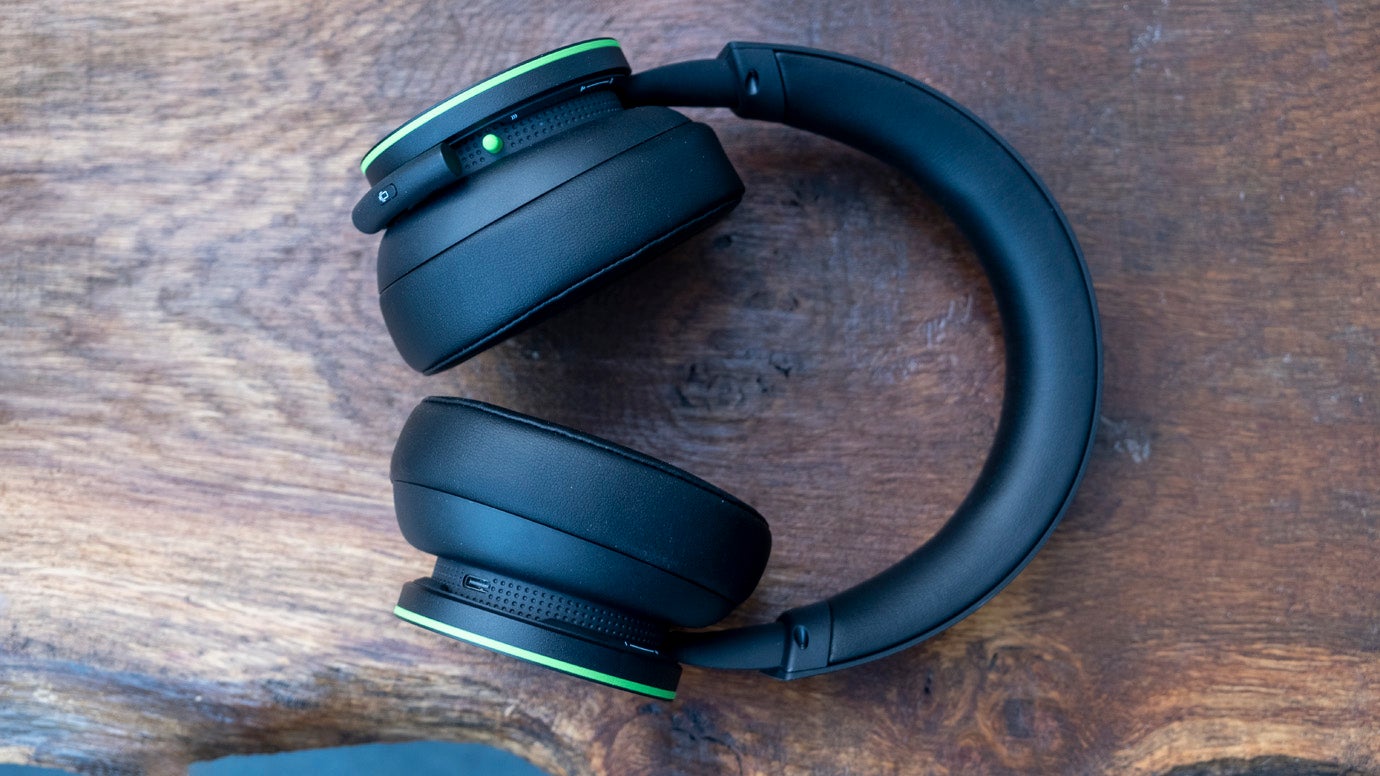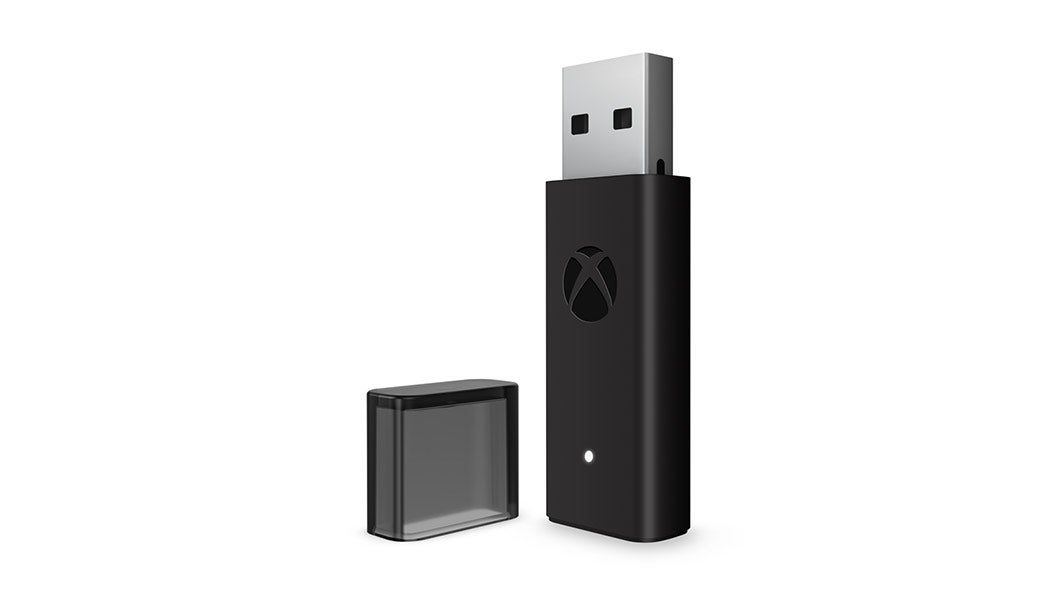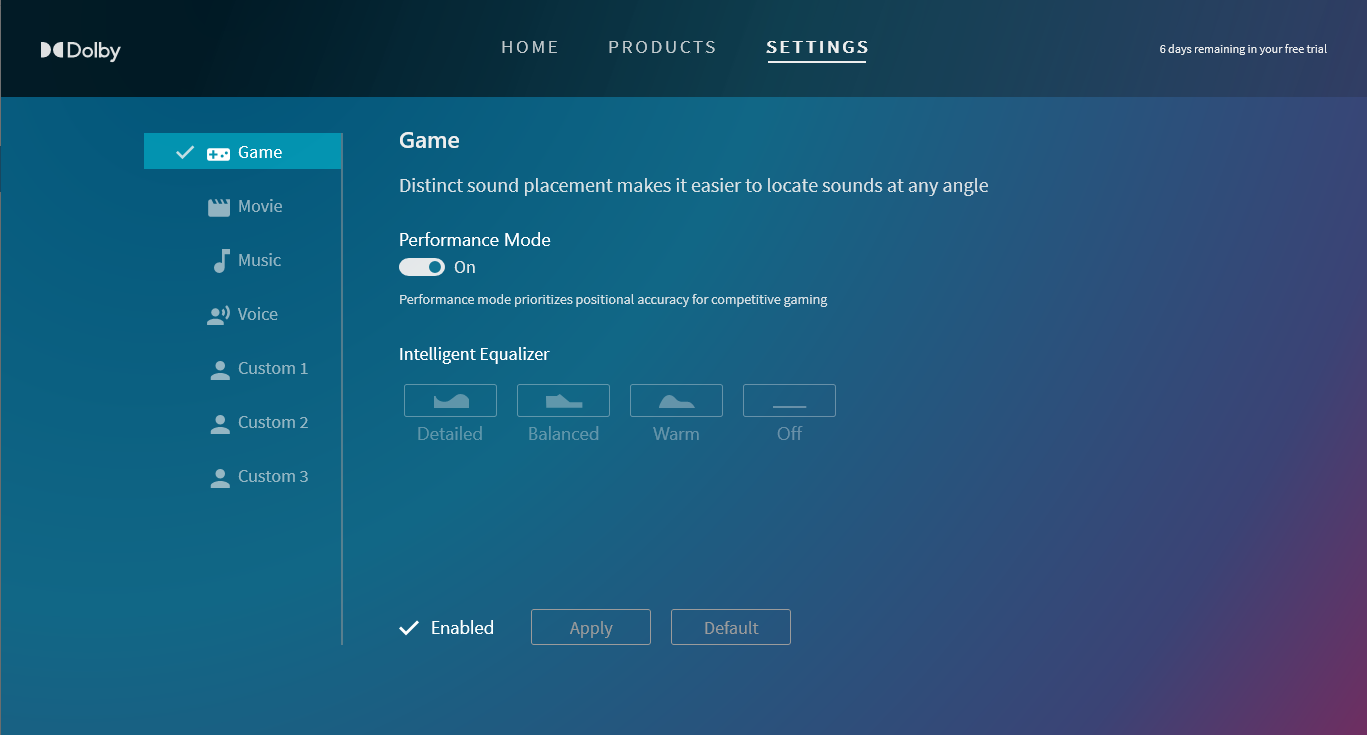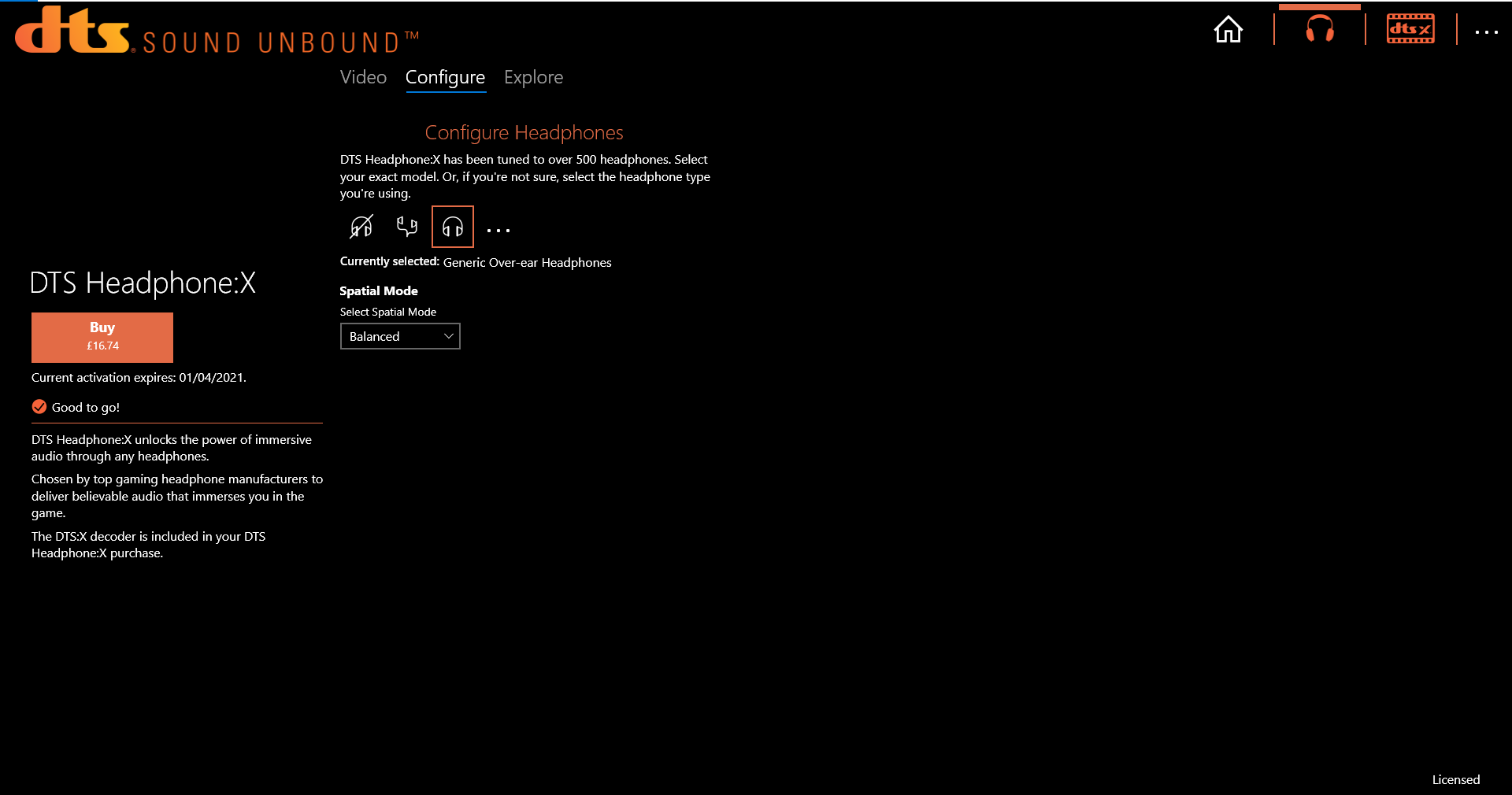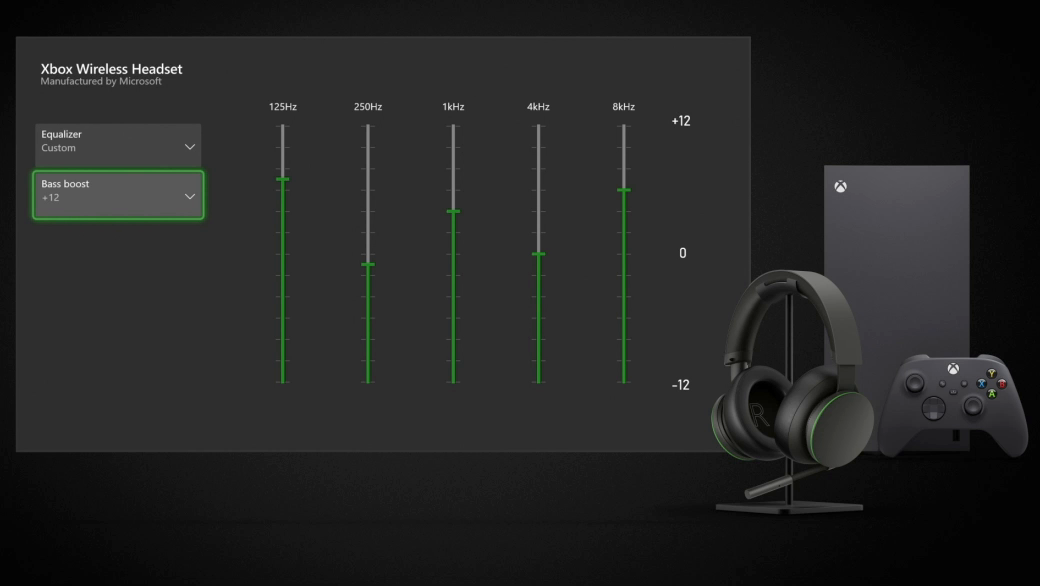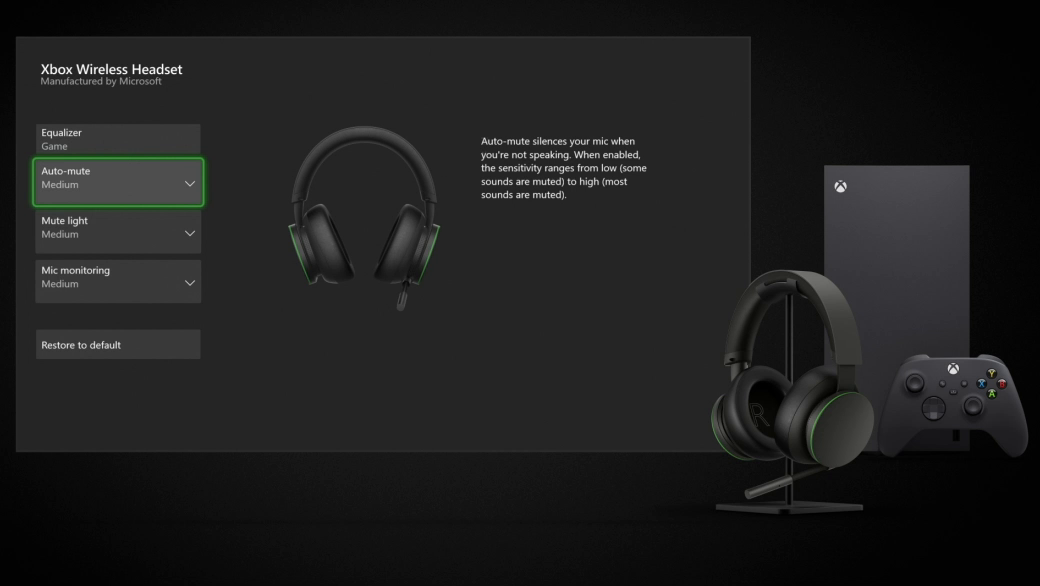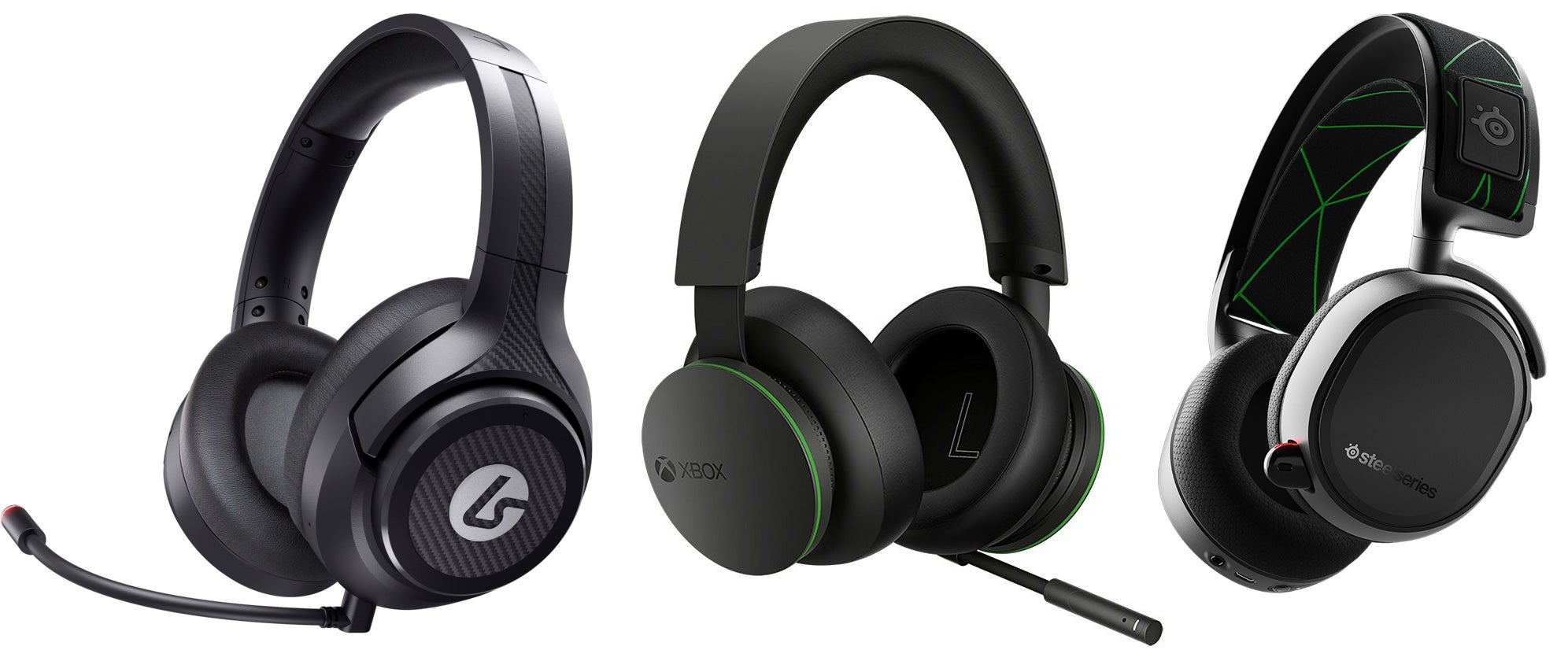The standout feature for me is its multipoint wireless. The XWH comes with Microsoft’s proprietary Xbox Wireless, allowing a wireless connection without the use of a dongle, but the headset also comes with Bluetooth 4.2. The neat thing is that you can use the headset with your Xbox and your phone simultaneously, making it easy to listen to music while playing games, or chat with your mates on Discord while playing a cross-platform title. Of course, having two connection methods available also provides a great degree of flexibility - I’m using it now, listening to chilled hip-hop beats in the garden while hammering on a mechanical keyboard, and later I’ll be using it to play Rocket League and Tetris Effect in the living room. The only issue I’ve discovered after a few days of testing is that the headset will cheerfully activate your Xbox Series X/S each time it’s turned on; unfortunately I haven’t discovered a way to disable this behaviour beyond leaving the house before turning on the headset - hardly ideal! It’s also worth noting that the headset doesn’t require a dongle for its Xbox connectivity, which is convenient but means that you don’t have a 2.4GHz USB dongle that could be plugged into a PC or PS5 (more on that later). Another highlight are the controls - rather than messing about with small, hard-to-find dials or buttons all crammed into a single earcup, Microsoft has made each ear cup into a massive volume dial. The left earcup allows you to adjust the mix between your Bluetooth and Xbox Wireless sources, while the right earcup adjusts the overall volume. The fact that the entire earcup is a control means you never struggle to locate the right dial, and you can dial up or down the volume accordingly even in a the few seconds of respite you’ll be be awarded in a heated Warzone match. Both dials have fixed start and end points, rather than rotating freely, and the left earcup has a notch in the centre of its rotation, so you get that proper physical feedback that you’re at maximum volume or that you’ve balanced the two audio sources evenly, which I love. The on-ear design provides a small amount of passive noise cancellation and prevents too much sound from leaking out, but you’ll still be aware of the sound of traffic or your flatmates asking you what you fancy making for dinner. The actual sound quality is better than I was expecting too, with a boosted low end that’s just right for playing immersive single-player titles or listening to bassier genres of music. The Xbox Accessories app provides the means to adjust the sound reproduction, with a half-dozen presets and a custom EQ plus an adjustable bass boost feature. (I’d recommend selecting the ‘Music’ profile or turning down the bass marginally for a more neutral profile in the custom EQ setting, but that’s just me.) The bass is a little flabbier here than on higher-end headsets, but this is definitely one of the best-sounding wireless gaming headsets I’ve tested below $100. This headset could sound even better if it supported wired 3.5mm or a higher-quality Bluetooth codec like apt-X, but this would require added complexity or additional license fees, respectively, so again the capabilities chosen here make sense. If you’re planning to use the headset on a Windows 10 PC, I’d strongly recommend picking up an Xbox Wireless Adapter (£20/$25) if you don’t have one already, as the 2.4GHz connection sounds much better and also offers much lower latency; the same adapter also works to connect Xbox controllers to your PC so you may already have one. These are stereo headphones out of the box, but you’re able to choose from three surround modes if you prefer - Windows Sonic, Dolby Atmos or DTS Headphone:X, all of which are available on Xbox and Windows 10 PCs. Windows Sonic comes free with the Xbox, and Dolby Atmos is offered as a free trial via the Dolby Access app until September 31st, 2021 (otherwise it’s a £14/$15 purchase after a week-long trial). DTS Headphone:X is available as a 14-day trial from the DTS Sound Unbound app, which should be enough time to tell if they’re worth the $20/£17 purchase. All three surround sound modes sounded great in my testing, offering slightly different results depending on the game tested - annoyingly, finding out what games support what formats can be hit or miss. Generally speaking, I found Dolby Atmos offered the most immersive results in games like Gears 5 and Warzone, but DTS Headphone:X resulted in a slightly less fatiguing sound. For most competitive games though, I tend to prefer the clarity of simple stereo. The headphones provide reasonable imaging in their stereo mode too, making them a good choice for Call of Duty, Fortnite and other competitive multiplayer titles. So that’s all fair and good for use while gaming, but what about going outside with this thing? Well, the Xbox Wireless Headset definitely looks like a gaming headset, with green circles on each earcup and Xbox branding on one side, but it’s light and comfortable enough that you could use it on the bus without any hardship. The clamping force here is a touch gentler than what I’m used to, so it’s less suitable for active use - say, for working out in the gym or going for a jog, as the headset can slip off easily. The headset is also robust enough that I’d feel comfortable flinging it in a bag for a train journey, but I’d feel a lot more confident doing so if the headset folded flat or came with a carrying case. Still, given the aggressive price point and the gaming focus, it’s easy to understand why these features didn’t make the cut, and the overall comfort levels are excellent. The Xbox Wireless Headphones charge via USB-C and come with a comically short cable to accomplish this; in my testing the headset lasted for about 13 hours before needing a recharge, with combined Bluetooth and 2.4GHz Xbox Wireless use for most of this. Charging takes around three hours, so you’ll definitely want to keep an eye on battery levels and recharge overnight if you need to. The headset can be turned on or switched into pairing mode by holding down a button on the back of the left earcup. The microphone quality is reasonable enough too, with the short-but-flexible boom arm curling around the earcup and out of sight when it’s not needed. A longer arm would likely have resulted in clearer speech, but again given the extra cost and complexity of a more advanced design that detaches or retracts into the headset, I’m not adverse to the approach Microsoft’s design team has chosen here. There’s a button on the underside of the mic that allows you to mute it quickly, which engages a small white indicator light near the tip of the mic. This will hopefully prevent those awkward moments when you realise the reason your jokes haven’t been landing with the squad is that no one has been able to actually hear them. Unfortunately for me, I can’t actually see that white light even with the mic arm tilted up, although your mileage may vary. There’s also an auto-mute function, where the mic is deactivated if it doesn’t detect you speaking, to prevent your family conversations being broadcast to your public Call of Duty lobby. With all things considered, the Xbox Wireless Headset stands out as the best value gaming headset for Xbox, despite some strong competitors. The SteelSeries Arctis 7X provides a more comfortable “ski google” design with a better microphone and slightly better audio, plus PlayStation 5 support, but these headphones do cost more at around £160/$150 and don’t include Bluetooth. For that feature, you’ll have to go for the Arctis 9X, which is closer to £180/$200 - a steep premium. The LucidSound LS15X is more comparable in price, costing £100/$90, and uses the same rotating earcup design as the Xbox Wireless Headset. However, its earcup dials make a grinding sound during use, its sound quality is unexceptional and there’s no Bluetooth support here, making the Xbox Wireless Headset the better choice for most people. Microsoft has done well here, and I think anyone that picks this headset up for its £90/$100 RRP will be happy with it. It’s not perfect, but it offers a deeper feature list than pricier alternatives while still delivering on the fundamentals. I’d even suggest that this headset is a little unfair for Microsoft’s peripheral partners like SteelSeries and Corsair, who are now facing much stiffer competition than we’ve previously seen from a first-party product. (That’s not to say that, for example, Sony’s Pulse 3D headset is bad, but there are certainly a greater number of good alternatives at a similar price point.) If you’re after a gaming headset that will play well on your Xbox with the versatility to also work on a Windows PC or a smartphone, this is a great choice.

